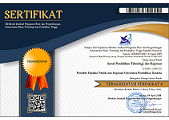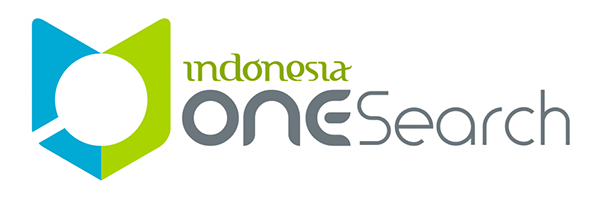EVALUASI SISTEM INFORMASI PERPUSTAKAAN UNIVERSITAS PENDIDIKAN GANESHA PADA ASPEK USABILITY DENGAN METODE USER EXPERIENCE QUESTIONNAIRE, HEURISTIC EVALUATION DAN THINK ALOUD
User Experience
DOI:
https://doi.org/10.23887/jptkundiksha.v21i1.66978Keywords:
Usability INLISLite 3.1, User experience Questionnaire (UEQ), Heuristic Evaluation, Think AloudAbstract
Perpustakaan Universitas Pendidikan Ganesha menggunakan aplikasi INLISLite 3.1 untuk memudahkan pelayanan dan pengelolaan perpustakaan. Aplikasi tersebut membantu perpustakaan dalam memonitoring tentang ketersediaan buku, daftar buku baru, peminjaman buku dan pengembalian buku. Penelitian ini dilakukan dalam rangka mengevaluasi keguanaan (usability) aplikasi untuk mengetahui tingkat efektifitas, kesalahan dan kepuasan pengguna, evaluasi respon terhadap sistem menggunakan User Experience Questionare (UEQ). Hasil uji respons dievaluasi dengan metode Heuristic Evaluation dan metode Think Aloud. Kemudian dilakukan analisis data sehingga akan menghasilkan data berbentuk kualitatif dan berbentuk kuantitatif. Data kualitatif berdasarkan evaluasi dengan metode Heuristic Evaluation dan metode Think Aloud terhadap pengguna sistem (end user) dan data kuantitatif berdasarkan pada pengujian respons pengguna. Hasil UEQ terhadap 25 pengguna menyatakan bahwa aspek kejelasan dan kebaruan mendapatkan hasil diatas rata-rata, yang artinya 25% produk dataset dianggap lebih baik, sedangkan 50% produk lainnya dianggap lebih buruk. Kemudian uintuk aspek Daya Tarik, Efisiensi, Ketepatan dan Stimulasi mendapat hasil yang baik, yang berarti 10% produk dataset dianggap lebih baik, sedangkan 75% produk lainnya dianggap lebih buruk. Hasil Heuristic Evaluation dilakukan oleh 3 evaluator ahli diketahui bahwa tidak ada permasalahan yang memiliki serverity rating tertinggi yang harus segera diperbaiki. Hanya ada minor problem sebanyak 2 permasalahan dan cosmetic problem sebanyak 8 permasalahan. Hasil Think Aloud terhadap 10 pengguna didapatkan masalah yang rata-rata mengalami masalah yang sama dalam penggunannya. Data yang telah diperoleh dari ketiga metode nantinya akan digunakan sebagai acuan rekomendasi perbaikan aplikasi dalam bentuk wireframe.
References
E. Susilo, F. D. Wijaya, and R. Hartanto, “Perancangan dan Evaluasi User Interface Aplikasi Smart Grid Berbasis Mobile Application,” Jurnal Nasional Teknik Elektro dan Teknologi Informasi (JNTETI), vol. 7, no. 2, 2018, doi: 10.22146/jnteti.v7i2.416.
J. Nielsen, “Usability 101: Introduction to Usability,” Nielsen Norman Group, 2012, [Online]. Available: https://www.nngroup.com/articles/usability-101-introduction-to-usability/
A. Gulati and S. K. Dubey, “Critical Analysis on Usability Evaluation Techniques,” International Journal of Engineering Science and Technology (IJEST), vol. 4, no. 03, pp. 990–997, 2012.
H. B. Santoso, M. Schrepp, R. Yugo Kartono Isal, A. Y. Utomo, and B. Priyogi, “Measuring user experience of the student-centered E-learning environment,” Journal of Educators Online, vol. 13, no. 1, pp. 1–79, 2016.
Z. J. Nasir, : Muhammad, Naveed Ikram, “Usability Inspection: Novice Crowd Inspectors versus Expert,” Systems and Software is made available under the CC-BY-NC-ND 4.0, pp. 1–41, 2021.
A. P. Hendradewa, “Perbandingan Metode Evaluasi Usability (Studi Kasus : Penggunaan Perangkat Smartphone),” Teknoin, vol. 23, no. 1, pp. 09–18, 2017, doi: 10.20885/teknoin.vol23.iss1.art2.
I. Astuti, W. A. Kusuma, and F. Ardiansyah, “Analisis Usability Homepage Situs Web Perpustakaan Nasional RI Menggunakan Metode Think Aloud,” Pustakawan Indonesia, vol. 15, pp. 39–47, 2014.
D. Noor Akmal Muhamat, “Development and usability testing of mobile application on diet and oral health,” PLoS One, p. https://doi.org/10.1371/journal.pone.0257035, 2021, doi: https://doi.org/10.1371/journal.pone.0257035.
J. Nielsen, “Thinking Aloud: The #1 Usability Tool,” 2014.
V. Wahyuni and I. Maita, “Evaluasi Sistem Informasi Manajemen Rumah Sakit (Simrs) Menggunakan Metode Unified Theory of Acceptance and Use of Technology (Utaut),” Jurnal Rekayasa dan Manajemen Sistem Informas, vol. 1, no. 1, pp. 55–61, 2015.
P. Savitri and M. Ispani, “Review Desain Interface Aplikasi Sopppos Menggunakan Evaluasi Heuristik,” Simetris : Jurnal Teknik Mesin, Elektro dan Ilmu Komputer, vol. 6, no. 1, p. 95, 2015, doi: 10.24176/simet.v6i1.243.
J. Nielsen, “How Many Test Users in a Usability Study?,” Nielsen Norman Group, 2012.
D. S. S. Sahid, P. I. Santosa, R. Ferdiana, and E. N. Lukito, “Evaluation and measurement of Learning Management System based on user experience,” in Proceedings - 2016 6th International Annual Engineering Seminar, InAES 2016, 2017, pp. 72–77. doi: 10.1109/INAES.2016.7821910.
M. W. M. Jaspers, T. Steen, C. Van Den Bos, and M. Geenen, “The Think Aloud method: A guide to user interface design,” Int J Med Inform, vol. 73, no. 11–12, pp. 781–795, 2004, doi: 10.1016/j.ijmedinf.2004.08.003.
Hala Magdy Hassan;Galal Hassan Galal-Edeen, “From usability to user experience,” IEEE, 2017, doi: 10.1109/ICIIBMS.2017.8279761.
Dicoding Intern, “Apa itu Wireframe? Perbedaan Wireframe, Mockup, dan Prototype,” Dicoding, 2021.
Downloads
Published
Issue
Section
License
Authors who publish with the JPTK agree to the following terms:- Authors retain copyright and grant the journal the right of first publication with the work simultaneously licensed under a Creative Commons Attribution License (CC BY-SA 4.0) that allows others to share the work with an acknowledgment of the work's authorship and initial publication in this journal
- Authors are able to enter into separate, additional contractual arrangements for the non-exclusive distribution of the journal's published version of the work (e.g., post it to an institutional repository or publish it in a book), with an acknowledgment of its initial publication in this journal.
- Authors are permitted and encouraged to post their work online (e.g., in institutional repositories or on their website) prior to and during the submission process, as it can lead to productive exchanges, as well as earlier and greater citation of published work. (See The Effect of Open Access)












